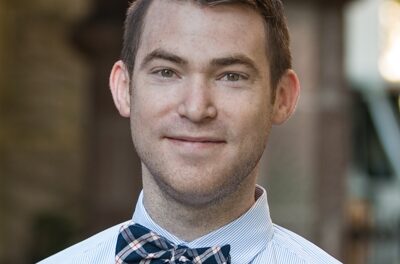On February 19 in NCSU’s Talley Student Center Ballroom, the Raleigh Civic Chamber Orchestra, under the baton of its Music Director Dr. Randolph Foy, presented another of its trademark creative lineups, this one of music associated with the theater in an incidental way, as opposed to in opera or musical theater. A chestnut of the repertoire was sandwiched between two rarely performed works, the three being presented in chronological order and representing the 18th, 19th and 20th centuries.
The first was a Suite of instrumental music from Platée composed in 1745 by Jean-Philippe Rameau. Platée is a strange work, not quite a true opera, but more than a ballet, actually an entertainment originally devised for a royal wedding, based on the legendary story of a mock marriage between Jupiter and the ugly swamp goddess of the title – daring, especially since the dauphin’s real bride, Maria Teresa, Infanta of Spain, was herself generally considered quite unattractive! And the puns didn’t stop there; there are words whose repetition imitates the croaking of frogs, for example, as well as other humorous onomatopoetic devices. Platée was sung by a countertenor, and Jupiter appears at one point as a donkey whose braying Platée interprets as sighs of love, whereupon he turns into an owl and flies off, pursued by bird sounds in the orchestra. The whole must have been quite a romp! How did the composer get away with this 30 years into Louis XV’s 60-year reign? Somehow they went unnoticed, or perhaps more realistically, no one dared point them out to Louis, for Rameau was soon named “Composer in the King’s Music Chamber.” The suite presented was seven short pieces strung together, many of them dance rhythms with an Ouverture to begin and a Chaconne to close. The reduced forces were a bit ragged at the outset, the musicians perhaps being intimidated by the increased exposure such small numbers created, but they quickly settled into the tempi for the “Tambourins.” The dynamics were impressively controlled in the “Orage” (Thunderstorm) movement, and there was some fine piccolo work by Mary Mitchell in the “Musette gracieux.” The final two numbers, the Menuet and aforementioned Chaconne were the most successful, but overall, the players, perhaps not surprisingly since few groups attempt music of this sort, just didn’t quite have the French Baroque style galant spirit. The pieces needed a bit more “zest” to make their good shape more effective and bring out the humor.
Next up were three excerpts – the Ballett, Entr’Act and Overture, in that somewhat illogical order – from the incidental music that Schubert wrote in a hurry in 1823 for the play Rosamunde – a dramatic work now long forgotten, its name remembered only because of Schubert’s music. These pieces are constantly used as fillers on classical radio stations, but curiously not very frequently heard live. The Overture was actually written for a different work, Die Zauberharfe (Magic Harp), and re-used by Schubert for the final form of this piece because he thought it better than the one he initially used, that from his opera Alfonso und Estrella , the constraints of time not allowing for the composition of an original one. The musicians, now in their nearly full complement, related better to this music and gave it a fine, energetic rendition to close the first half of the evening.
After intermission, the work whose title provided that of the program, Aaron Copland’s 1925 Music for the Theatre , was heard. As its original title, Incidental Music for an Imaginary Dram a, reveals, this was not written for an actual stage production, but rather as a hypothetical exercise, and was, in fact, the result of a commission for the Boston Symphony Orchestra. Its five movements, Prologue, Dance, Interlude, Burlesque, and Epilogue, unlike those of the Rameau and the Schubert, are actually inter-related, have a balanced structure and contain recurring thematic elements. Some of the signature Copland is here, especially in the bookend pieces and in some of the rhythms, and although he uses both American jazz and popular song as inspiration, he has not yet entered his “epitome” of American music mode. The performance was excellent; clearly the musicians related best to this music of all they were playing. They made a very good case for the work’s being heard more frequently than it is. There was lovely solo oboe work from Paul Berman, and clarinet work from James Williams, in addition to more fine flute work from Mitchell and some good brass and percussion solo work. Foy appropriately acknowledged all soloists, calling for individual bows.
Like the trademark programming, Foy’s customarily superb printed program notes were supplemented by his succinct, enlightening oral comments introducing each work. This was overall yet another enjoyable winner for the RCS organization, played to a reasonably sized audience, albeit seemingly made up primarily of family and friends.











